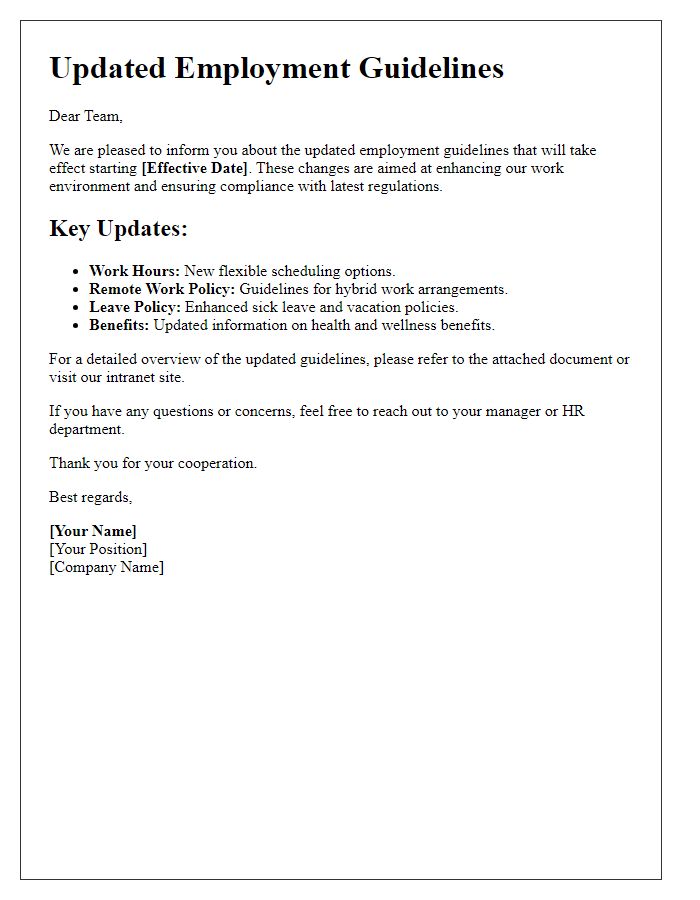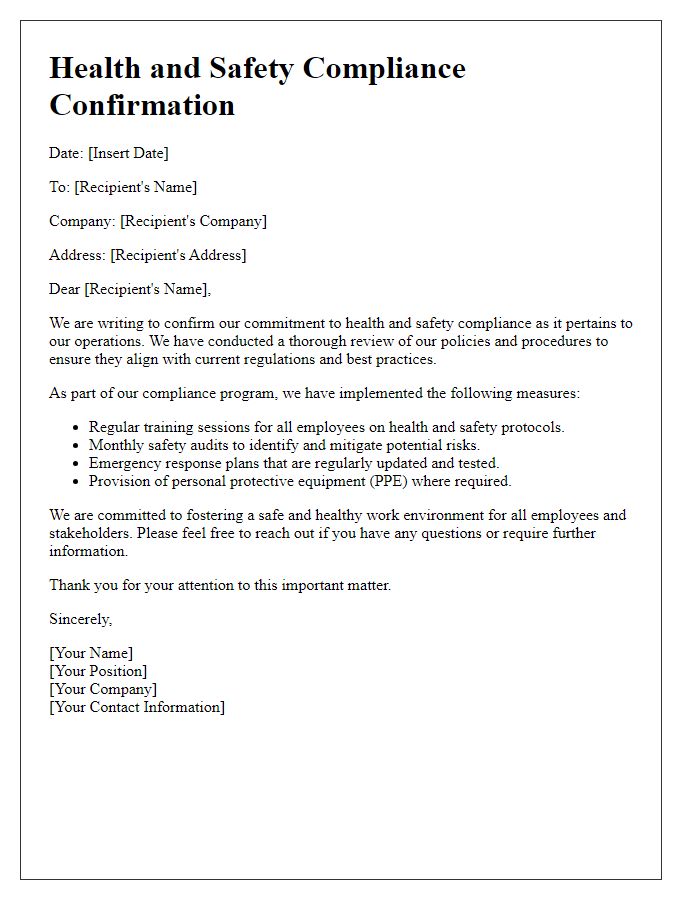Welcome to our guide on crafting the perfect letter for your return to work plan! Transitioning back to the office can be both exciting and a bit daunting, and having a well-structured letter can help set the right tone for your colleagues and supervisors. In this article, we'll walk you through essential elements to include, ensuring your message is clear and supportive of both the company's and your personal goals. So, if you're ready to get started on your smooth return to the workplace, read on to discover some valuable tips and templates!

Employee Information
Creating a return-to-work plan for employees requires detailed attention to specific elements that ensure a smooth transition back to the workplace. Employee information should include full name, position, department, employee ID number, and contact information. Documenting the employee's absence reason (e.g., medical leave, personal leave, or family-related reasons) along with the dates of absence is essential for context. Additionally, outlining any accommodations or adjustments needed for the employee's role is critical to promote a supportive work environment. Clarifying a return date, as well as any phased return details, helps set expectations. Lastly, noting the supervisor's name and any relevant HR representative ensures communication channels are clear and accessible for the employee's reintegration.
Work Schedule and Hours
A structured work schedule significantly enhances employee productivity and workplace harmony. Implementing a flexible work hours strategy, such as a staggered schedule, allows employees to choose their start and end times, promoting work-life balance. Moreover, adhering to core business hours, typically between 9 AM and 3 PM, ensures peak collaboration among team members. For instance, integrating a bi-weekly review meeting on Wednesdays at 10 AM fosters clear communication and accountability across departments. Additionally, incorporating remote work options, such as two days per week, can further accommodate diverse employee needs while maintaining operational efficiency.
Health and Safety Measures
A robust return to work plan incorporates essential health and safety measures to ensure employee well-being in corporate environments, such as offices in urban centers. Key elements include social distancing protocols, maintaining at least six feet (approximately 1.83 meters) between individuals at workstations to minimize virus transmission. Regular sanitation of high-touch surfaces, such as door handles and shared equipment, must be conducted multiple times a day using disinfectants approved by health authorities like the Centers for Disease Control and Prevention (CDC). Employers should implement a daily health screening process, including temperature checks exceeding 100.4 degrees Fahrenheit (38 degrees Celsius) to identify potential illness. Additionally, clear signage regarding hygiene practices and the use of personal protective equipment (PPE) such as face masks should be posted throughout the workplace, particularly in high-traffic areas. Furthermore, establishing a flexible remote work policy can facilitate employee safety while maintaining productivity levels. Regular training sessions on health and safety protocols should also be conducted to reinforce compliance and awareness among employees.
Productivity and Performance Goals
A return-to-work plan emphasizes productivity and performance goals essential for successful reintegration into the workplace. Clear objectives target increased efficiency, focusing on key performance indicators (KPIs) relevant to specific job roles. Regular feedback mechanisms, such as weekly check-ins, assess progress toward these goals while fostering open communication. Engagement in training sessions, scheduled monthly, enhances skill sets in alignment with evolving job requirements. Additionally, establishing a supportive work environment, incorporating flexible schedules, and offering resources for mental wellbeing (like counseling services) contribute to sustainable productivity and overall employee performance. Investing effort in these areas ensures a smooth transition back to work, ultimately benefiting both employees and the organization.
Support and Resources Available
A well-structured return-to-work plan encompasses various support and resources tailored to facilitate employees' reintegration after prolonged absences. Key resources, such as Employee Assistance Programs (EAPs) located within major corporations like Google and IBM, provide counseling services that help address mental health and emotional well-being. Accessibility to ergonomic assessments ensures that physical environments, especially in offices across cities like New York and San Francisco, accommodate diverse needs, promoting comfort and productivity. Furthermore, training programs, for instance, online learning modules through platforms like LinkedIn Learning, equip employees with necessary skills, ensuring a smooth transition back to their roles. Regular check-ins with human resources teams and designated managers offer personalized guidance and feedback, fostering a supportive atmosphere. Overall, a comprehensive return-to-work plan integrates these resources, aligning with organizational goals while supporting employee wellness.













Comments